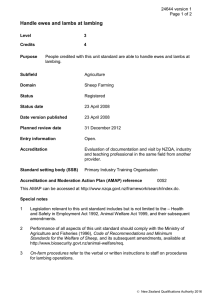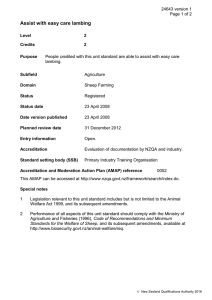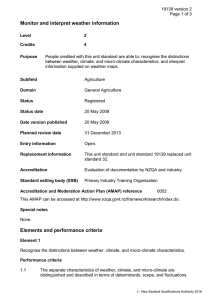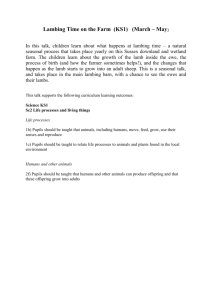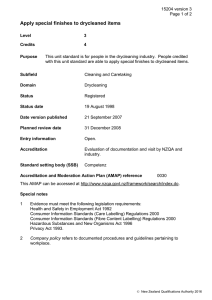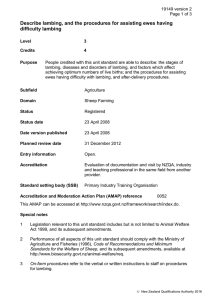Identify and observe lambed and unlambed ewes, and monitor and
advertisement
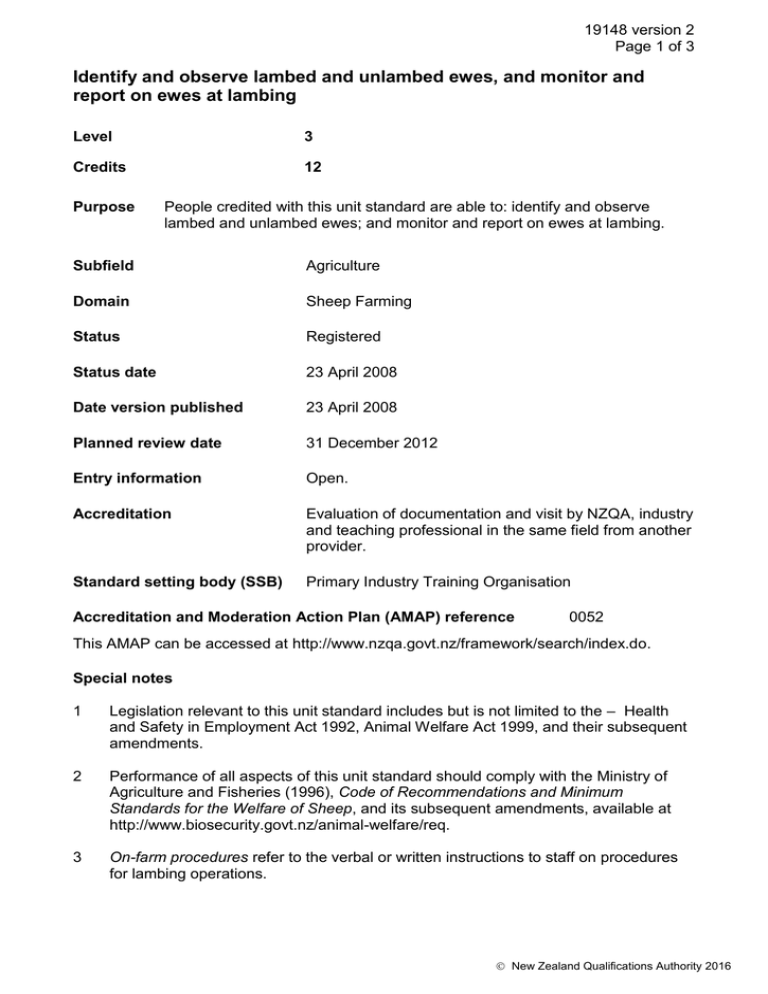
19148 version 2 Page 1 of 3 Identify and observe lambed and unlambed ewes, and monitor and report on ewes at lambing Level 3 Credits 12 Purpose People credited with this unit standard are able to: identify and observe lambed and unlambed ewes; and monitor and report on ewes at lambing. Subfield Agriculture Domain Sheep Farming Status Registered Status date 23 April 2008 Date version published 23 April 2008 Planned review date 31 December 2012 Entry information Open. Accreditation Evaluation of documentation and visit by NZQA, industry and teaching professional in the same field from another provider. Standard setting body (SSB) Primary Industry Training Organisation Accreditation and Moderation Action Plan (AMAP) reference 0052 This AMAP can be accessed at http://www.nzqa.govt.nz/framework/search/index.do. Special notes 1 Legislation relevant to this unit standard includes but is not limited to the – Health and Safety in Employment Act 1992, Animal Welfare Act 1999, and their subsequent amendments. 2 Performance of all aspects of this unit standard should comply with the Ministry of Agriculture and Fisheries (1996), Code of Recommendations and Minimum Standards for the Welfare of Sheep, and its subsequent amendments, available at http://www.biosecurity.govt.nz/animal-welfare/req. 3 On-farm procedures refer to the verbal or written instructions to staff on procedures for lambing operations. New Zealand Qualifications Authority 2016 19148 version 2 Page 2 of 3 Elements and performance criteria Element 1 Identify and observe lambed and unlambed ewes. Performance criteria 1.1 Lambed and unlambed ewes are recognised in accordance with on-farm procedures. 1.2 Mismothering is kept to a minimum by careful handling in accordance with onfarm procedures. Element 2 Monitor and report on ewes at lambing. Performance criteria 2.1 Problems at lambing are identified and treated promptly in accordance with the supervisor’s directions. Range metabolic – pregnancy toxaemia (sleepy sickness), hypocalemia (milk fever); reproductive disorders – prolapsed uterus (bearings), campylobacter (abortion), retained afterbirth, salmonella, toxoplasmosis, dystocia. 2.2 Signs of a lambing ewe are recognised in terms of behavioural and physical symptoms. 2.3 Signs of ewes having lambing problems are recognised in relation to behavioural and physical symptoms. 2.4 Ewe condition is monitored in accordance with on-farm procedures. Please note Providers must be accredited by NZQA, or an inter-institutional body with delegated authority for quality assurance, before they can report credits from assessment against unit standards or deliver courses of study leading to that assessment. Industry Training Organisations must be accredited by NZQA before they can register credits from assessment against unit standards. Accredited providers and Industry Training Organisations assessing against unit standards must engage with the moderation system that applies to those standards. Accreditation requirements and an outline of the moderation system that applies to this standard are outlined in the Accreditation and Moderation Action Plan (AMAP). The AMAP also includes useful information about special requirements for organisations New Zealand Qualifications Authority 2016 19148 version 2 Page 3 of 3 wishing to develop education and training programmes, such as minimum qualifications for tutors and assessors, and special resource requirements. Comments on this unit standard Please contact the Primary Industry Training Organisation standards@primaryito.ac.nz if you wish to suggest changes to the content of this unit standard. New Zealand Qualifications Authority 2016
